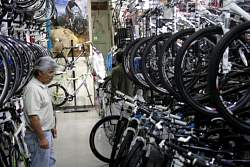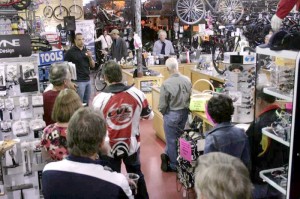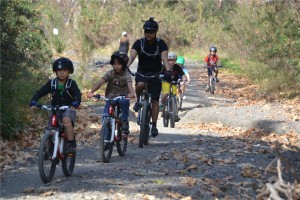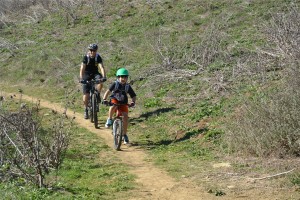By Mark Langton
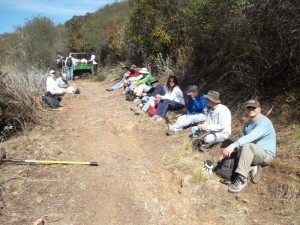
Does this trail look "ruined"?
Seems like every time there is maintenance on our local trails, we hear from some very passionate people within the mountain bike community: “Leave the trails the way they are!” Along with this we also get the usual “How can CORBA do this?” A recent comment even alleged that CORBA is trying to take away our freedoms by doing trail work; “CORBA is conspiring with the State to ruin a beautiful single track trail—The Guadalasca.” As I and several others said in recent blog responses, trails are dynamic, they need maintenance every so often. CORBA doesn’t decide what work needs to be done, but agrees that it does and feels that we should participate as advocates of shared open space trails.
Many times people making these comments start off by saying “I have been riding these trails for several years…” If that were true, then they’d know that trails return to a more natural, “challenging” appearance after any kind of trail work. The Sulphur Springs Trail in Cheeseboro Canyon and Solstice Canyon Trail section of the Backbone Trail are two such trails that come to mind. Both were widened and smoothed over, and many people said they’d be “ruined.” Look at them now; they are as challenging and natural—and fun—as ever.
I’ll admit, I am not always in favor of trails becoming less challenging, but at the same time, I have to balance it with the fact that I can ride the trail in the first place. Guadalasca (and other sections of the Backbone Trail) is open to bicycles thanks to the advocacy efforts of CORBA. Some people might say that even if it were closed, they’d ride it. That’s your personal choice, but I’d like to think that as someone who enjoys the open space, you’d like to do it without the cloud of breaking the rules hanging over your head. Just because you can break the rules, it doesn’t mean you should.
Here’s an analogy I came up with while out riding (always good therapy): Let’s say the agency that maintains the street you live on proclaimed that, due to budgetary constraints, they would only be able to do limited maintenance on the street. The street and sewer system falls into disrepair, so you and your neighbors put together a volunteer group to help the agency; you get trained in road and sewer repair, and enlist other neighbors to help. Still, the street becomes riddled with potholes and cracks because the agency just can’t afford the materials and equipment to do the repairs. Soon, off-road vehicle owners start using your street to challenge their vehicles’ capabilities because there’s nowhere else nearby they can do it, which make the street conditions worse. Not to mention these vehicles can go much faster than the passenger cars most of you and your neighbors are driving, making it unsafe for you and your neighbors to even drive down the street. You caution the off-roaders that they shouldn’t drive their vehicles on your street, especially at high speeds, because it is creating an unsafe situation, but they still do because “it’s public and they have a right to drive there. And besides, we’re not going that fast.” Finally, after several years, you and the agency start making repairs, but the off-roaders keep coming and start complaining that you are ruining their fun zone. They come to your volunteer maintenance days and complain you are making the street too smooth and it’s no fun to drive there. They write letters to you saying you are trying to take away their freedoms. All because you are trying to do the right thing for your community.
Here’s an idea: The next time you think someone is trying to take something away from you in your local riding area, ask yourself, “what can I do to help improve the situation?” That could mean getting more involved with your local community. Or it could mean going someplace where the trails are more challenging, where riding them at higher speeds does not impact the rest of the trail user community. Such places exist, whether it be a race or a bike park like Mammoth Mountain. Our local trails are for shared use by many different types of users, so you’re just going to have to adjust your riding style accordingly. Kind of like on the street when driving your car or motorcycle; you may have a high-performance vehicle, but to drive it to its capabilities on public streets just wouldn’t smart or safe. Just because you can break the rules, it doesn’t mean you should.



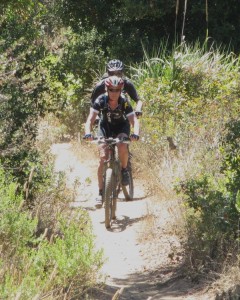
 At noon, following the morning of trail-building, workers will be treated to hamburgers/vegi-burgers, chips, fruit and drinks while enjoying the camaraderie of fellow trail enthusiasts!
At noon, following the morning of trail-building, workers will be treated to hamburgers/vegi-burgers, chips, fruit and drinks while enjoying the camaraderie of fellow trail enthusiasts!
